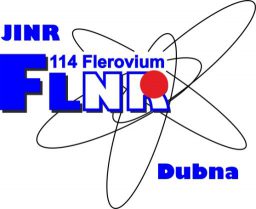Theoretical study of physicochemical properties of heavy and superheavy elements/Development of experimental complex based on ACCULINNA-II fragment separator
10.04.2024 – FLNR Scientific Seminar, 11-00, FlerovLab Conference Hall
Seminars in connection with the election for the positions
Astakhov A.A., FLNR, JINR
Theoretical study of physicochemical properties of heavy and superheavy elements
The results of the work for 2020 – 2023 years are presented. The purpose of the work was studying the adsorptive and gas-kinetic properties of heavy and superheavy elements as well as theoretical support for FLNR chemical experiments. A new theoretical approach to modeling the shape of a chromatographic peak combining, along with traditional Monte-Karlo, methods of quantum chemistry and molecular physics has been developed. A method for estimating the diffusion coefficients of SHE atoms and molecules in the gas phase is proposed. A scheme for analysis of experimental data determining the radionuclide transport speed in gas-transport system has been developed. Conclusions have been drawn for arranging the next chemical experiment on Flerovium as well as future experiments on SHE chemistry.
Астахов А.А.
Теоретическое исследование физико-химических свойств тяжелых и сверхтяжелых элементов
Представлены результаты работы за 2020 – 2023 г. Целью работы являлось изучение адсорбционных и газокинетических свойств тяжелых и сверхтяжелых элементов, а также теоретическая поддержка химических экспериментов ЛЯР. Разработан новый теоретический подход к моделированию формы хроматографического пика, сочетающий в себе наряду с традиционным Монте-Карло методы квантовой химии и молекулярной динамики. Предложен способ оценки коэффициентов диффузии атомов и молекул СТЭ в газовой фазе. Разработана схема анализа экспериментальных данных по определению скорости транспотра радионуклидов в газотранспортной системе. Сделаны выводы для постановки следующего химического эксперимента по флеровию, а также будущих экспериментов по химии СТЭ.
Krupko S.A., FLNR, JINR
Development of experimental complex based on ACCULINNA-II fragment separator
Success of studying nuclei on the boundary of nucleon stability in many ways depends on the possibility of obtaining intensive secondary beams of radioactive nuclei and complete detection of products formed in the reactions on a physical target and subsequent decays. Over the past three years of U400M modernization the resulting secondary beams and operation of their diagnostics system were analyized. Implementation and improvement work is underway for the equipment of ACCULINNA-2 setup such as a system of cryogenic targets for non-radioactive gases, tracking detectors, RF-filter and others. The work is underway on documentation necessary for using the tritium provision system that will make the research with a unique tritium target possible.
С.А. Крупко
Развитие экспериментального комплекса на базе фрагмент-сепаратора ACCULINNA-2
Успех исследования ядер на границах нуклонной стабильности во многом определяется возможностью получения интенсивных вторичный пучков радиактоивных ядер и полного детектирования продуктов, образующихся в реакциях на физической мишени и последующих распадах. За прошедшие три года модернизации У-400М проведен анализ получаемых вторичных пучков и работы системы их диагностики. Ведутся работы по внедрению и совершенствованию оборудования установки ACCULINNA-2, таких как: система криогенных мишеней для нерадиоактивных газов, трекинговые детекторы, ВЧ-фильтр и др. Ведется работа над документацией, необходимой для применения системы тритиевого обеспечения, что позволит проводить исследования с уникальной тритиевой мишенью.
